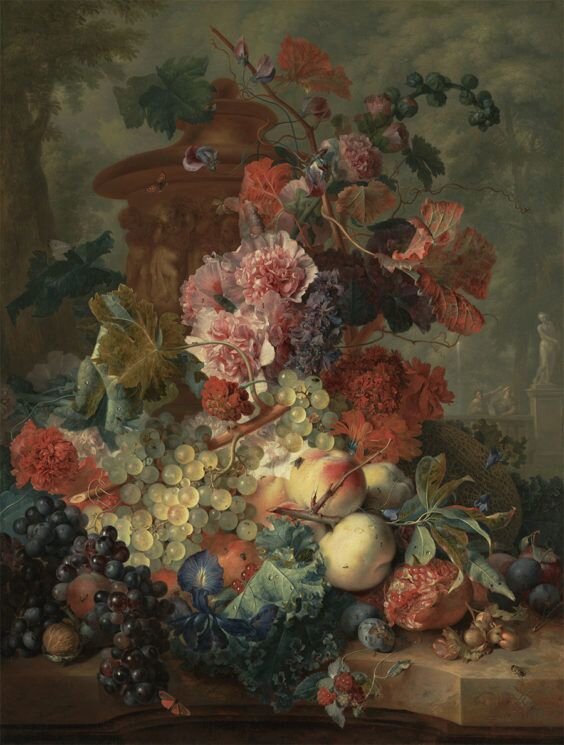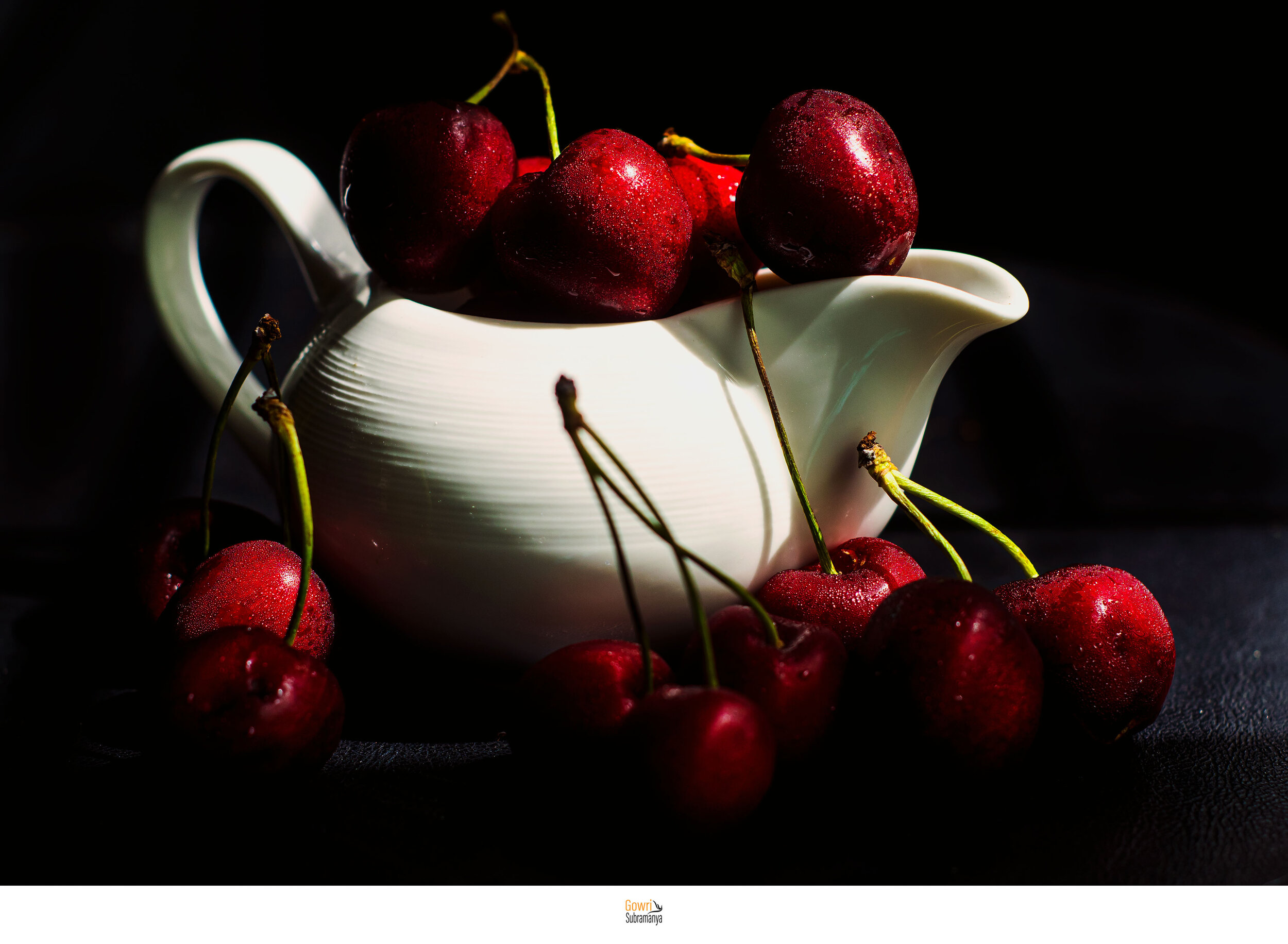Chiaroscuro: shining light on still-life photography
Planning a food photoshoot can be overwhelming. So many elements to combine into an appetising whole - like a fruit bowl.
When I started to dabble in food and still-life photography a year ago, it was both exciting and terrifying. As a nature photographer, I had grown accustomed to the idea that when I set out for a photo shoot, the only things I could control were the settings of my camera. Nature decided everything else (with a tiny wiggle room for me to make some adjustments) - the light, the background, the elements in my frame, the composition, even whether my models would show up for the shoot at all. The best way to accomplish anything in a day is to work with what you have and allow yourself to go with the flow. Even then, it’s good to be mentally prepared to return home empty-handed. I’ve heard nature photographers complain about having to work with so little creative control. As frustrating as it can get, I prefer this arrangement of having very little control in my photography. Of course, as I am not a professional, I am under no pressure to deliver a predetermined set of images as per deadlines to a hard-to-please client. So it works in my favour to relinquish all control, to be as lazy as I can be.
This antique masala box almost led me to believe that the secret to good still-life images is shopping for unique props. Thankfully the golden light on the chillis showed me another way.
With indoor tabletop photography, however, I suddenly felt elevated to Director of Everything - I had to make an image from scratch — right from deciding what to shoot to how I want the frame to look. Suddenly, every aspect of image making was in my control. What colour should I use for the background? Do I use a bowl or a plate? How many things can I fit in the frame? How bright, how dark? Daylight or artificial light? Light from above or from the side? Endless questions to be answered even before I touch the camera. Although as a creative, I know there are no right or wrong answers to any of this, there are definitely great or poor choices that would ultimately decide if the image would be satisfying or underwhelming. All this is a perfect recipe for creative block. This is why the one thing writers hate the most is a blank page. Perhaps why designers hate to become managers.
The only way to unblock, I figured, is to cut down the list of decisions to make. It’s what the human brain does all the time - find shortcuts to decisions.
What if I picked a few basic things as working tools that I would use over and over - simple backdrops (black or white boards), favourite shooting spots and simple lighting (window light in the morning), so I was free to visualise the images and compositions that I wanted? What is the one element that appeals to me most in a table top image?
The answer was Chiaroscuro, the interplay of contrasting light and dark in an image. Dramatic highlights turned even more dramatic by deep shadows. The term comes from a painting technique that seems almost synonymous with Caravaggio, but I found myself drawn to it in Dutch and Flemish still-life paintings.
Still life with fruit by Caravaggio. Image Credit: Wikimedia Commons
Rembrandt makes this heart-stopping adventure come alive with the clever use of dramatic light and shadows. Image Credit: Wikimedia Commons
Jan van Huysum uses highlights to depict soft and tender beauty of flowers and fruit in this masterpiece, a stunning work I fell in love with in J. Paul Getty museum, Los Angeles.
Earthy, farm fresh carrots that pop out of the frame, thanks to the golden morning light.
The joy of still-life photography is throwing light on the elegance of the simple and mundane. Understanding the Chiaroscuro way has helped me to ease the complexities and hard work it involves.
Depth
The contrast of light and dark introduces a subtle element into the frame that changes the dynamic between the viewer and the image. It gives the two-dimensional objects in the picture a depth rendering them ‘real’.
Motif
Uneven lighting, with conspicuous highlights, can illuminate a motif you want to work into your image. It can be a single colour or a certain shape that repeats in a frame. Placing various pieces in the line of light to show a common motif adds new meaning to the image.
The motif in this image: a bunch of pink flowers. But what about the figs? Well, the figs are a bunch of flowers turned inward.
The star
One of the biggest advantages of this technique is that you can direct the viewer’s attention to the hero of the story. The single beam of light illuminating one over everything else is almost as good as drawing an arrow and labelling it, “look here!”
Regardless of how light is used, the theme of making the hero of the image stand out, to be admired and desired is the most common message in food photography. At least, commercial photography chiefly aims at evoking desire, to want to grab the food out of the image, to crave for it.
In this context, I love to use contrasting light to highlight the natural shapes and contours of fruits or vegetables.
A bunch of cherries tumbling out of a bowl showing off their best side
Mystery and intrigue
An evenly lit frame with pretty things can be great, but an unevenly lit image captures your imagination and makes you wonder about the things in the shadows you can’t see. To that extent, Chiaroscuro images pique the viewer’s interest, invite them into the frame and hold them there a little longer.
Even as our grandmother gave all the kids sweets and snacks, I would always wonder what else she kept hidden in her brass boxes.
Drama
Even if it’s only a frozen moment, a photo has a story to tell. The story can be boring and dull, or plain and straightforward, or play an entire opera in one frame. And it’s not always down to having a stage full of characters dancing and singing. It can be one actor under a spotlight, drawing a spectrum of emotions from the audience. In a still image, the interplay of dark and light has the same power that music and an actor’s expressions have in a play.
A close study of garlic in various delicate dance moves.
The pounding of fresh masala is a story of every Indian kitchen.
A taste of nostalgia
Nothing beats freshly plucked beets for earthiness.
A significant impact of contrasting light in a picture is that it adds a certain ‘mood’ to the image. People talk about‘moody’ or ‘atmospheric’ light in an image but struggle to put into words what the ‘mood’ conveys. They don’t have to. After all, the very idea of pictures is to replace words that fail. However, as a writer, I must try and make my words sweat a little before giving up.
The defining aspect of Chiaroscuro images is the partial illumination of a frame. In my view, the reason this simple effect is so appealing is that it holds the power of collective memories of humans of an age before electric lights became the order of the day. A light beam reminds us of the morning rays through the kitchen window or the golden rays of a setting sun into the living room, signalling that it was time to wrap up work for the day. The angle of light, the softness or hardness of it, the way it shafts in through gaps and holes into our dwelling has centuries of memories, meanings and emotions blended in them. This gives the images an earthy taste of nostalgia.
The iconic ‘Glow of Hope’ by S L Haldankar
We grow accustomed to the Dark —
When light is put away —
As when the Neighbor holds the Lamp
To witness her Goodbye —
A Moment — We uncertain step
For newness of the night —
Then — fit our Vision to the Dark —
And meet the Road — erect —
And so of larger — Darknesses —
Those Evenings of the Brain —
When not a Moon disclose a sign —
Or Star — come out — within —
The Bravest — grope a little —
And sometimes hit a Tree
Directly in the Forehead —
But as they learn to see —
Either the Darkness alters —
Or something in the sight
Adjusts itself to Midnight —
And Life steps almost straight.
~ Emily Dickinson
Do you have thoughts on still life or food images? What makes them appealing to you? Leave a comment to share your thoughts, I would love to read them.













